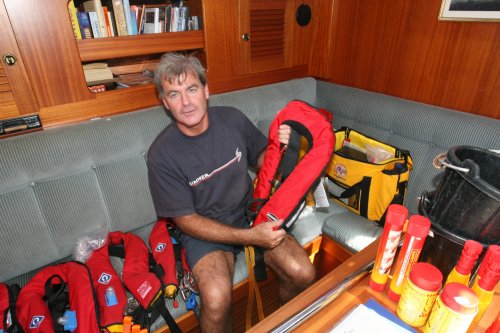 |
| Preparing for a safety equipment inspection |
The safety check will always start with all the equipment on deck being checked including the navigation lights and all the man overboard equipment. Most of the time the only problems we find is that some of the man overboard equipment is missing or there is no reflective tape on the liferings.
Once the equipment on deck has been inspected then the inspector will move to the cockpit for a check on the equipment there including checking the dates on all the flares and making sure there is the right number onboard. This is usually followed by asking to see the EPIRB, the Emergency Position Indicating Radio Beacon, that will indicate the yachts position in an emergency. Many people have this equipment onboard their boats but do not know how to test it, which should be done at least once a month.
The safety check then moves below where stowage is checked along with lifejackets. There are many different types of lifejacket on the market but they must all be in good condition and have on them: the name of the boat, a whistle, a light, retro-reflective tape, crotch straps, a sprayhood and also a harness line.
Once all the items have been looked at and any questions from the skipper answered, the points that need to be addressed are gone over and the skipper is given time to correct them before a re-check. Most of the boats in the rally have to sort out one or two small points, however the aim of the rally is to give crews enough information about the checks so that they are fully prepared when it comes to inspection day.
However with all safety equipment the skipper and the crew should familiarise themselves with the function and the location of each item so that it is natural when it comes to using them in anger.